By Sophie Ibbotson
The Cotswolds is one of the greenest and lushest regions of England’s countryside. The rolling hills of Gloucestershire and Oxfordshire are largely rural, with pretty villages built from a distinctive cream colored stone. Country pubs and historic churches dot the landscape, and you’re just as likely to meet a herd of cows as a classic car on the winding backroads.
Hidden in this English idyll not far from the attractive, slightly hippie town of Stroud is Burleigh Court Restaurant & Hotel. This Grade II listed manor house is perched at the top of a valley, and on a sunny summer’s afternoon it must rate as one of the most tranquil views in the county. The chairs on the terrace are carefully positioned to make the most of the location, and there are sheepskins and a fire pit to keep things cosy on cooler evenings when a breeze blows through. Plants are in abundance around the house, not only in the well kept gardens but also in the hedgerows, woodland, and fields adjacent to the property. It was the riches of nature which drew me to Burleigh Court, and on which the hotel’s restaurant is building its name.
Burleigh Court’s Oak Room restaurant is a grand space, wood paneled and with huge windows which drench the room with light. At first glance you would assume it is contemporary with the rest of the house, but as I learned from looking at historic photos dotted on mantelpieces and walls, this extension was added in the mid 20th century. The restaurant was given a makeover last winter and reopened with a new design. Head Chef Shaun Jones has his eye on gaining the UK’s prestigious three AA Rosette status when the Oak Room is next inspected, and if the meals I enjoyed there are anything to go by, it should be an effortless call for the reviewers to make.

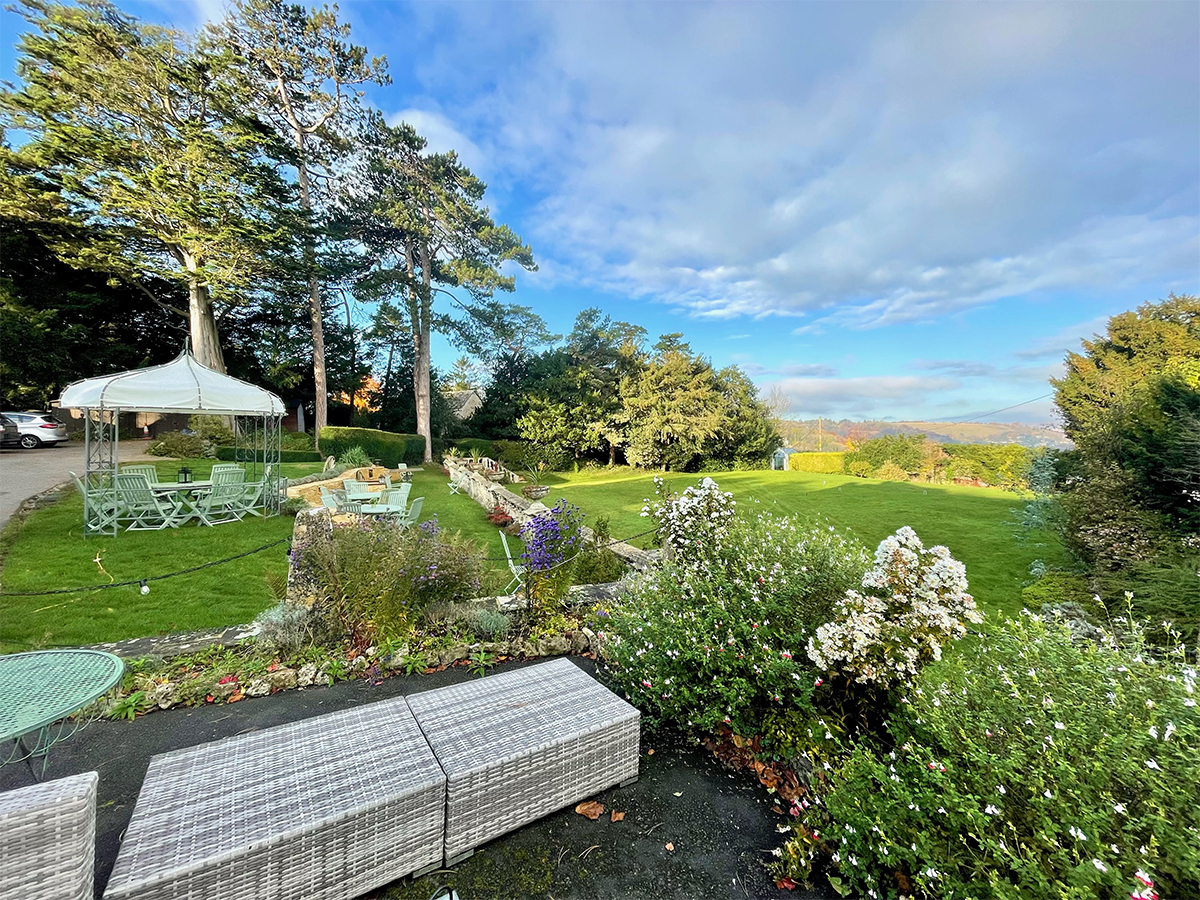
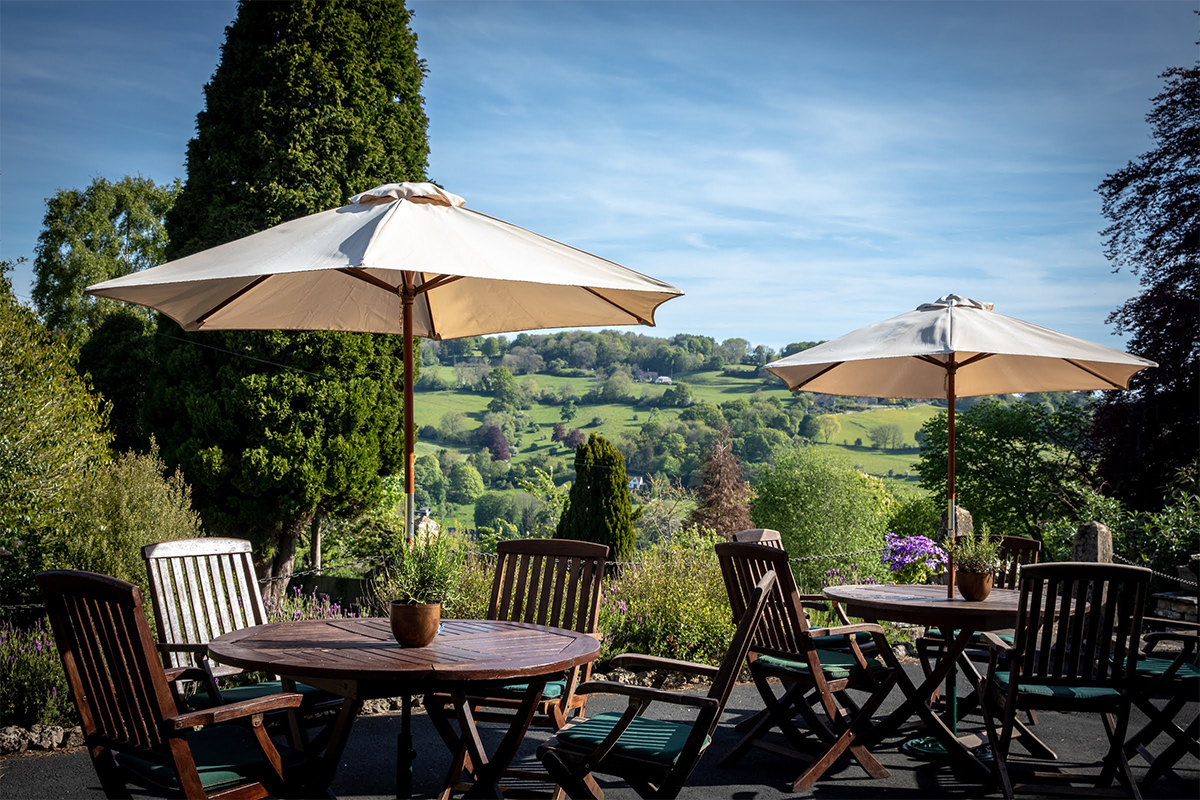
Shaun and his team emphasize local ingredients on the menu. Many of the fresh ingredients are grown in the hotel’s kitchen garden or foraged locally by the hotel’s expert forager, Emanuelle Paulson. I’ll tell you more about her in a moment. As far as possible, the remaining ingredients are sourced from within a 35 mile radius of Burleigh Court. Seasonality is very important, as is sustainability: there’s game on the menu in season, and the American crayfish are an invasive species which have been caught by a Cotswolds fisherman.
On my first evening at the hotel, the first thing to catch my eye on the menu was wild garlic gnocchi with wild garlic pesto. Native to Europe and Asia, allium ursinum (to give it its Latin name) is a flowering plant which thrives in moist, shady woodland. From April to June its distinctive fragrance is a common accompaniment to country walks, and the plant – which can be gathered by the handful – makes a delicious dark green soup.
Emanuelle, Burleigh Court’s forager, not only delivers her daily finds to the hotel’s kitchen, but is keen to introduce guests to the joys of foraging. She studied for an undergraduate degree in conservation and ecology, and is fascinated by native plants, in particular edible varieties. Her five-hour Wild Foodie Foraging Experience ($85 per person, including lunch) opened my eyes to the basket of ingredients hidden in plain sight.
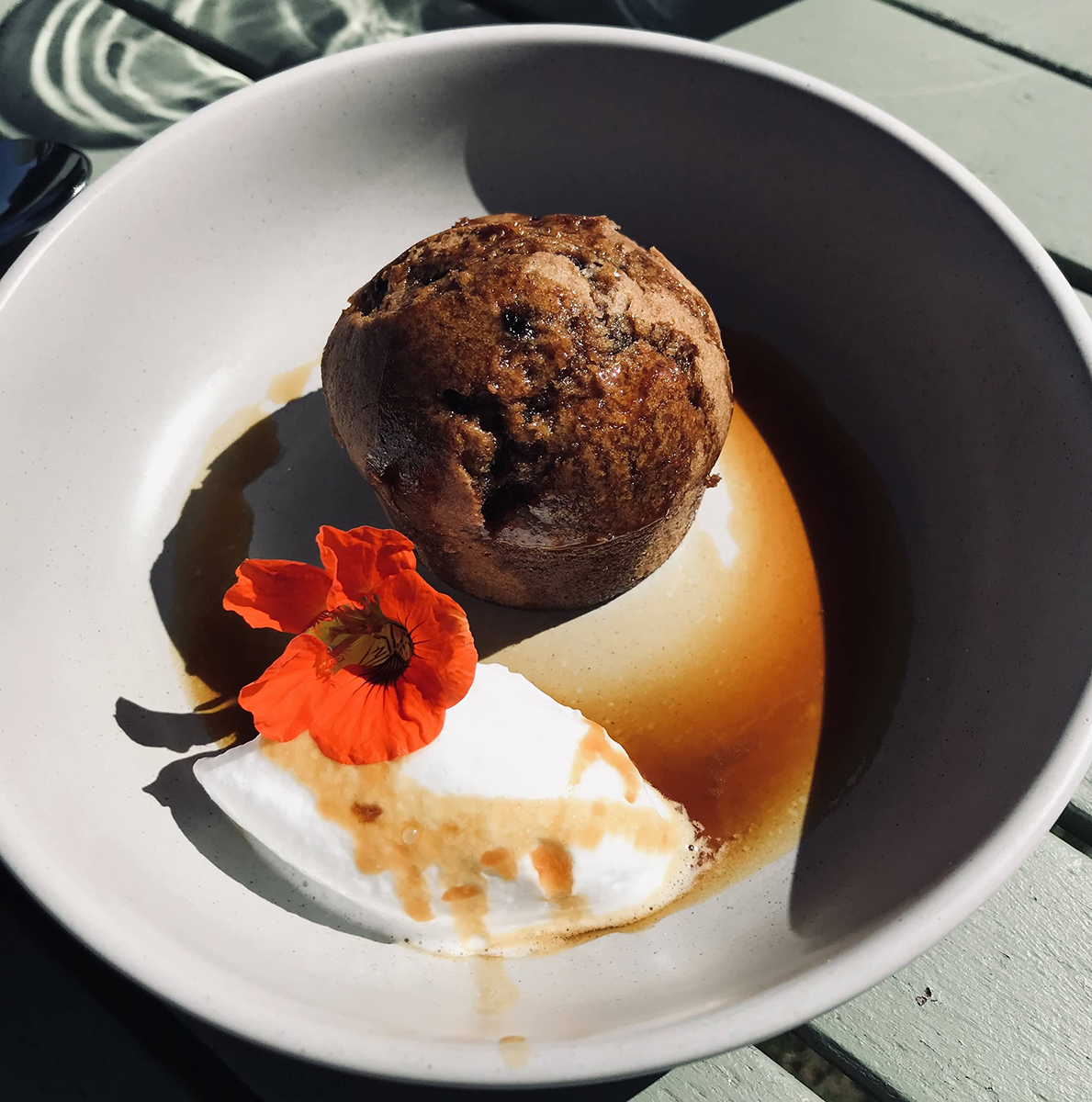
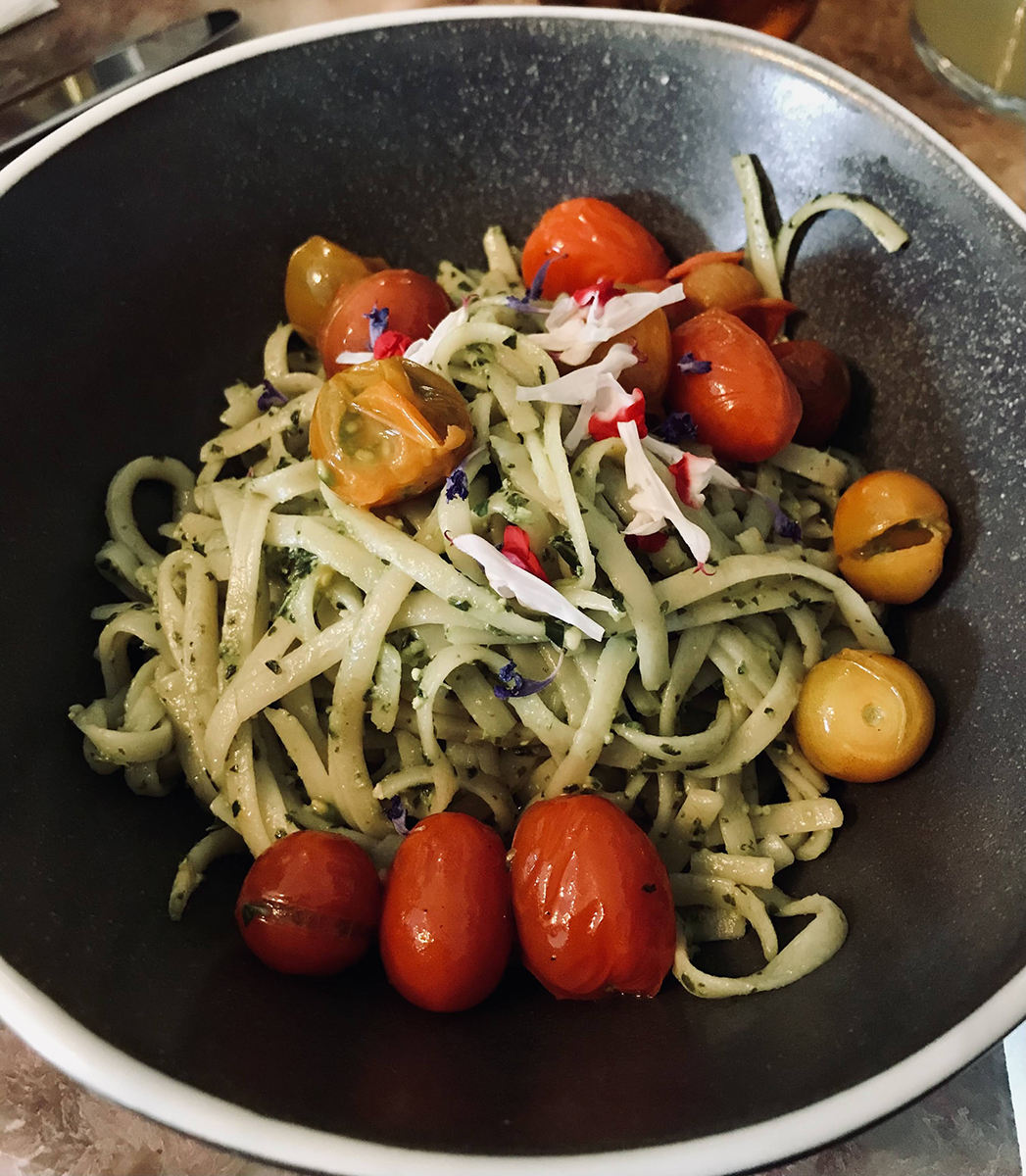
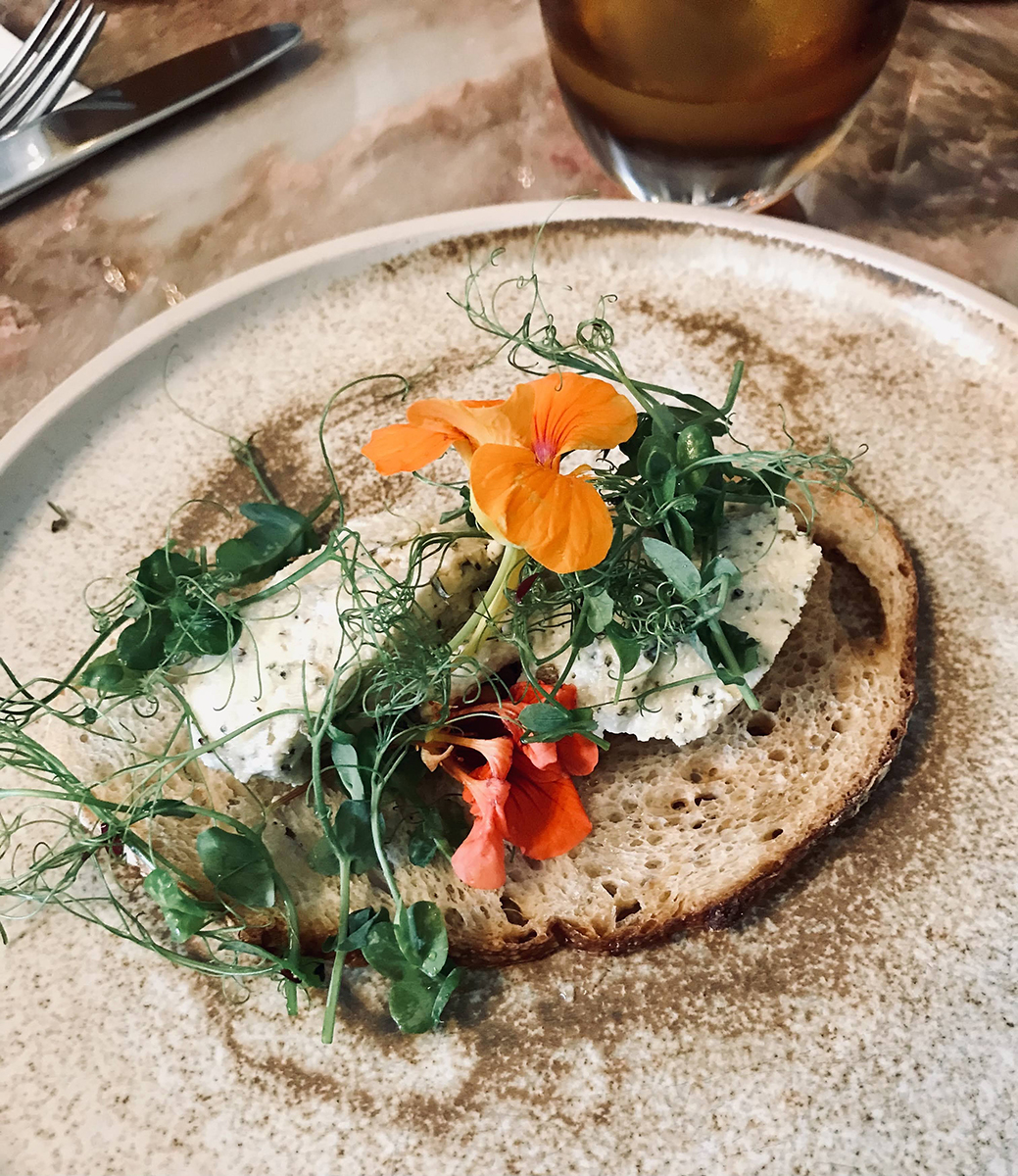
We met in the hotel lounge, eyed up the clouds, and concluded that if it rained we’d just get wet. Emanuelle led me down the garden steps to a large clump of plants growing beneath a tree. It was but a stone’s throw from the hotel’s front door. I could already see and smell the wild garlic, pretty with its delicate white flowers. There were dock leaves, too. I recognised these from childhood: they usually grow in the same place as stinging nettles, and it’s an old wives’ tale that rubbing dock on a sting will take the itch away. Emanuelle plucked from the ground three leaves, one wild garlic, one dock, and one I wasn’t familiar with which she called Lords and Ladies. The latter, apparently, is poisonous, but you can tell it apart from the other two by its pattern of veins, one of which runs around the perimeter of the leaf. This was Emanuelle’s simple but effective introduction to safety. The UK has relatively few plants which can kill you, but there are plenty which would make you sick, especially if you ate them raw. The first thing every forager must learn, therefore, is to accurately ID those species which are edible. If in doubt, leave it behind.
From the garden we walked out through Burleigh Court’s gate and down the lane. We stopped to look at the hedgerows, in people’s front gardens, and in the village churchyard. Every plant had a story. There were plenty that I recognised, such as cow parsley and wild strawberries, which were just starting to drop their petals and fruit, ready to be eaten in a few weeks’ time. I eyed up a patch of nettles with scepticism, childhood memories of being stung head to toe still painfully sharp in my mind. But Emanuelle was adamant that nettle leaves can be eaten raw, as well as being made into a tasty tea or soup. She showed me how to pick them without being stung. Folding the leaf lengthways, with the stings on the inside, brushing it between your fingers and then rolling it will break the stings and render it harmless. You can then pop it straight into your mouth. At the same time, Emanuelle also gently corrected my misidentification of what is always assumed was a non-stinging nettle. The leaves on the two plants might look alike, but the stingless one with white flowers is in fact a type of mint, not a nettle at all.
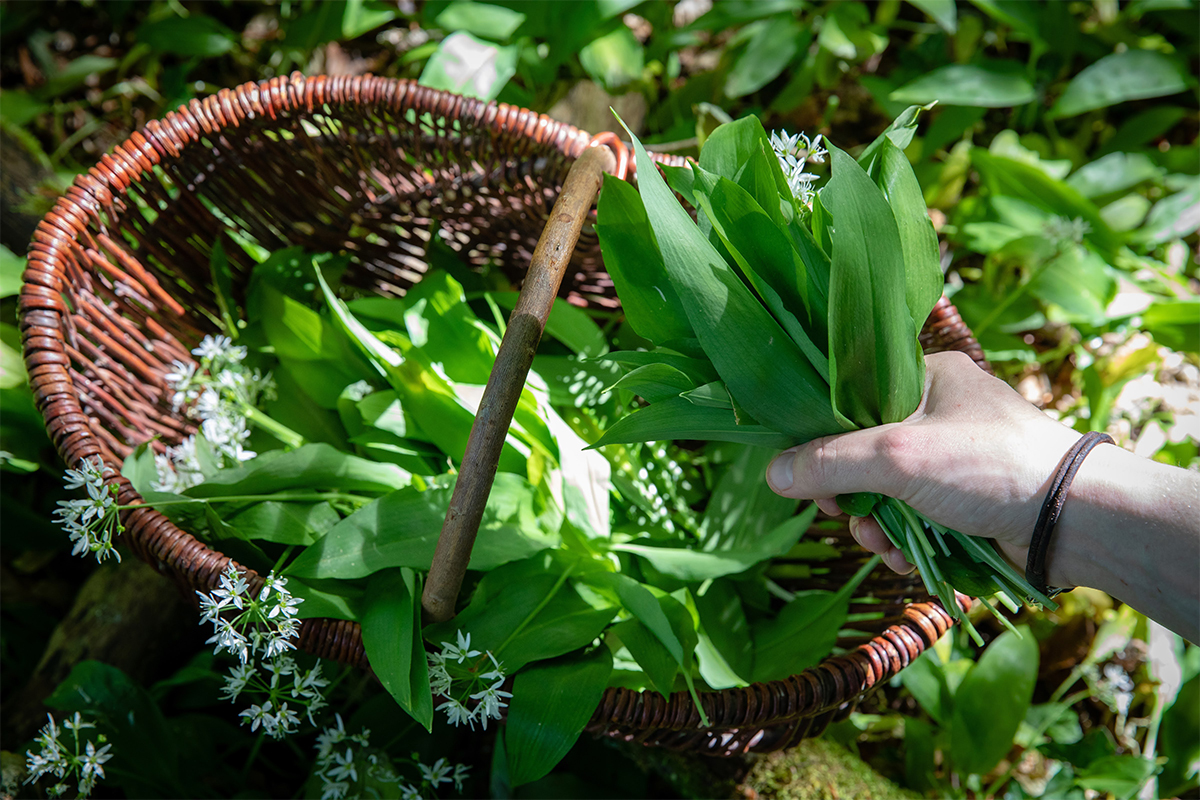
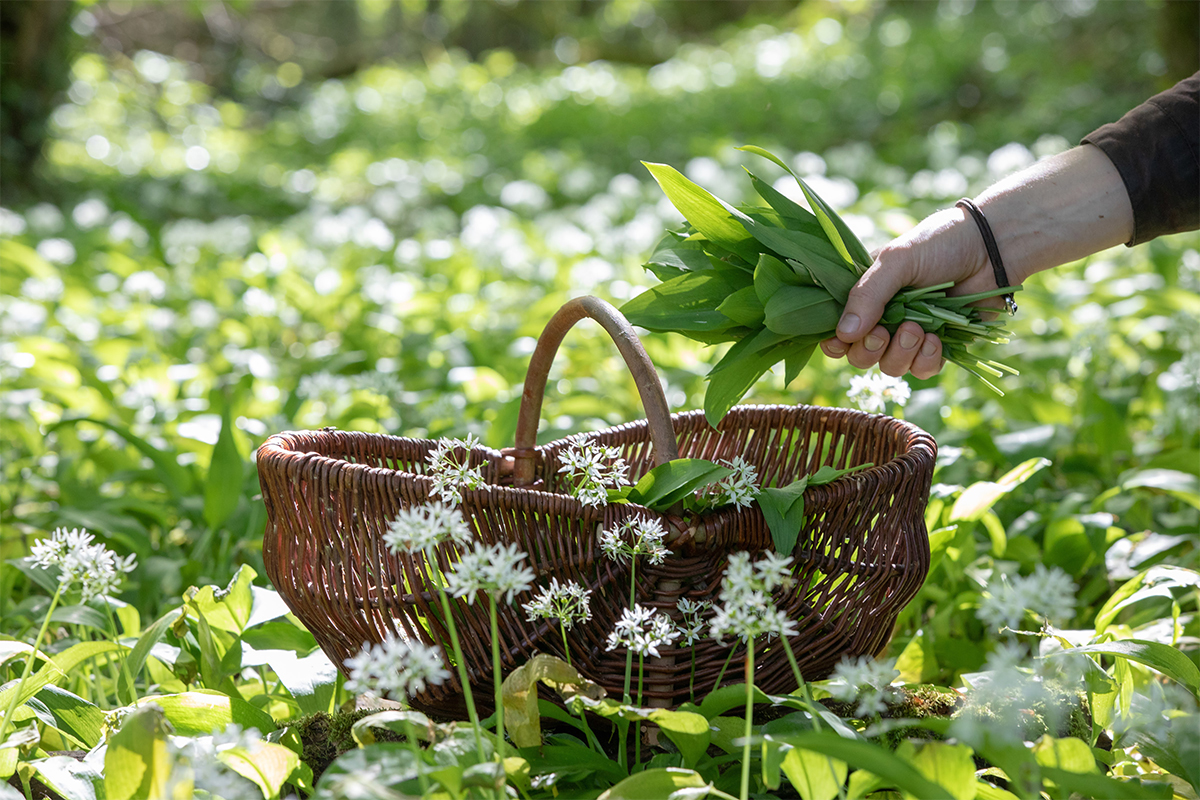
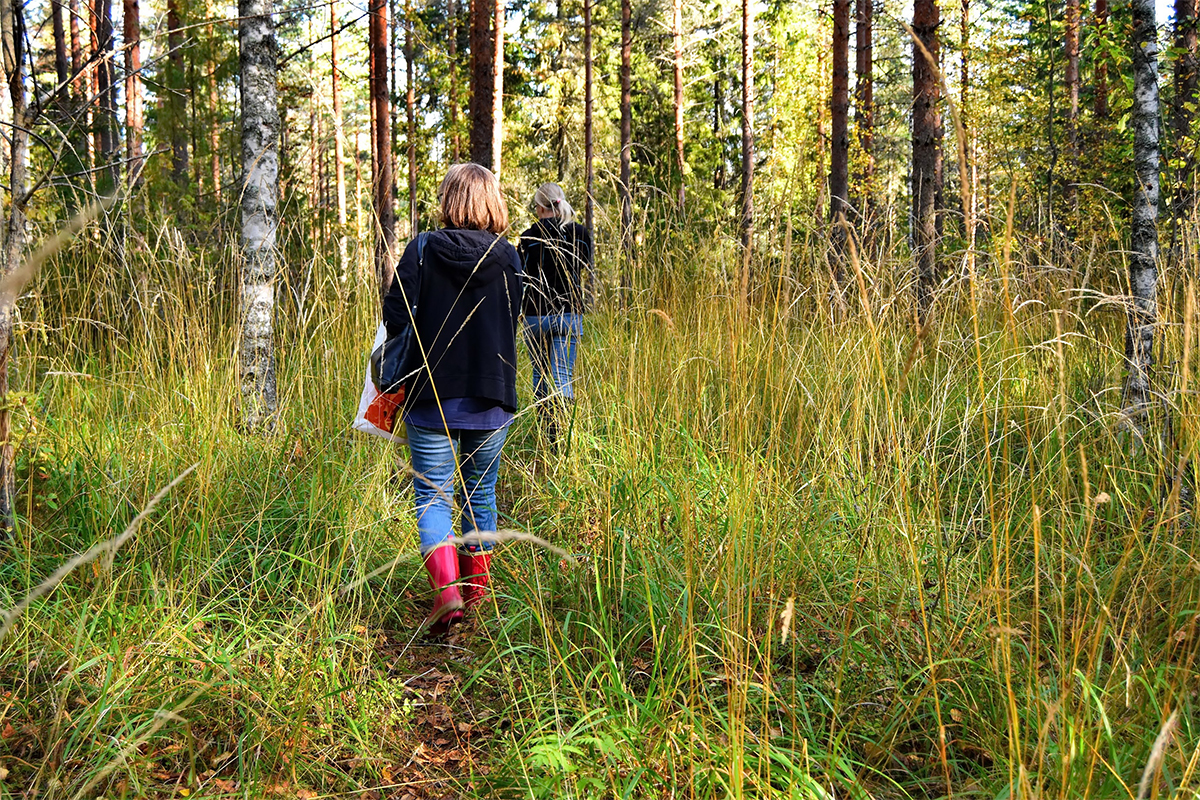
And so the lesson went on, with every fact shared with a smile and important context, which is why I retained so much information. I might now be tempted to steam fresh shoots of hogweed as a vegetable, and my salads will certainly become more imaginative with the addition of dandelion and lime leaves. Bright pink salvia flowers are edible, I learned, and so too are the perennial purple aquilegia which often self seed from gardens onto verges. A scattering of these petals is a gorgeous way to decorate a dish, and the flowers have a wonderful sweetness of their own.
Later in the day in Burleigh Court’s bar, I ordered a cocktail and discovered that it was made with rosemary syrup. The rosemary, of course, was picked in the garden, just yards away from where it was being served. I reflected that the reason this hotel seems such a relaxing place is that it is perfectly in sync with its ecosystem. For the past hundred years or more, the building and its staff have evolved and become part of the surrounding landscape. This takes effort on the part of the human inhabitants, but the relationship is a symbiotic one, and it is the epitome of sustainability, something which many hotels now pay lip service to as it is in fashion, but which few actually fully embrace.
I knew that with this realisation I would sleep well. I had walked in the hills in fresh air, and dined on the bounties which nature had provided. My room, number 2, looked out on the gardens through two huge bay windows, and in a four poster bed, an antique which must be as old as Burleigh Court, I dropped off into a deep and dreamless slumber. www.burleighcourtcotswolds.co.uk














